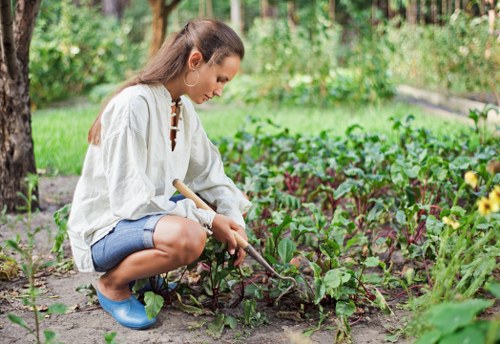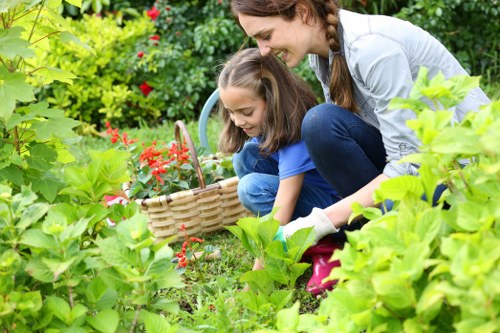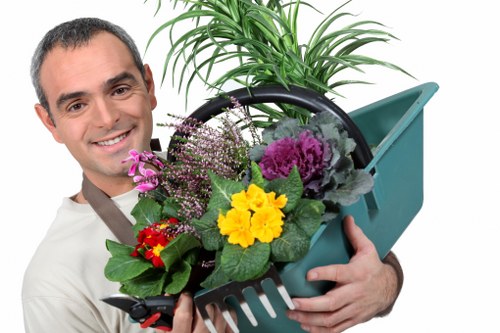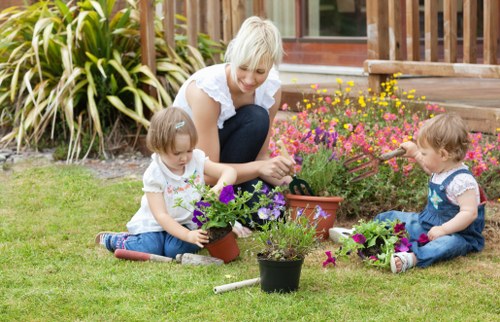Gardeners Bloomsbury: Cultivating Urban Nature
Introduction

Welcome to the world of Gardeners Bloomsbury. In the heart of a bustling urban area, Bloomsbury has grown into a vibrant center for those who love to nurture plants and enjoy nature. This article is designed for anyone who has an interest in urban gardening and community green spaces. We will explore the history, techniques, and community aspects that make Bloomsbury a special place for green thumbs.
In a modern city filled with concrete and busy streets, urban gardening offers a breath of fresh air. Gardeners Bloomsbury stands as a beacon of hope and creativity, where local enthusiasts transform small spaces into colorful gardens. These efforts not only beautify the city but also create social bonds and encourage sustainable living. Every plant matters in the fight against urban sprawl and environmental neglect.
The energy and passion of community gardeners have led to remarkable transformations across Bloomsbury. Residents share tips, tools, and techniques, building a network of support and learning opportunities. From organic practices to innovative container gardening, the practices here are easily accessible and tailored to urban conditions. This infusion of nature into the city highlights the power of dedication, creativity, and empathy in cultivating a greener future.
History of Gardeners Bloomsbury

Bloomsbury has a rich history that extends far beyond its modern-day gardens. The tradition of cultivating nature in urban spaces began centuries ago, with early residents planting small patches of greenery in communal areas. Over time, these practices evolved as knowledge spread about horticulture and landscape management. The history of Gardeners Bloomsbury is intertwined with the cultural and social evolution of the area.
Many local legends recount stories of passionate gardeners who turned neglected plots into thriving gardens. These pioneers not only transformed vacant lots but also laid the groundwork for community engagement. Their practices were simple yet effective, relying heavily on organic methods and local soil resources. The historical significance of these gardens has been preserved through community records and local traditions.
As the city expanded, the gardening community in Bloomsbury reinvented itself. New tools, modern techniques, and an emphasis on sustainability have become hallmarks of this movement. Today, the blend of tradition and innovation is evident in every garden and green space. The legacy of Gardeners Bloomsbury is maintained by sharing past wisdom and incorporating new ideas that respect the environment and enhance urban life.
Gardening Tips and Techniques for Bloomsbury

Whether you are a beginner or a seasoned green thumb, the tips and techniques shared by Gardeners Bloomsbury provide practical advice for every garden. Urban horticulture requires a mix of creativity and knowledge. Start by selecting the right plants for your environment. Bloomsbury’s microclimate means that choosing species that can thrive in limited space and variable light is essential.
One popular approach is container gardening. By using pots, planters, or even recycled materials, gardeners can create mobile and flexible green spaces. This method is especially useful in densely built urban areas where traditional gardens might not be possible. Container gardening brings nature closer by allowing you to control the soil quality, water drainage, and overall aesthetics.
Another useful tip is to incorporate vertical gardening strategies. A vertical garden uses walls or fences to mount a series of planters, making the most of limited ground space. These creative designs are not only decorative but also practical, as they allow more plants to be grown in a small area. Each small step counts when it comes to enhancing urban green spaces with smart gardening solutions.
Community Engagement and Social Benefits

One of the most heartwarming aspects of Gardeners Bloomsbury is the strong sense of community that blossoms alongside the plants. Urban gardening creates opportunities for people from diverse backgrounds to come together. Whether you are a student, a retiree, or a professional, the garden becomes a meeting space for shared passions and knowledge.
Community gardens provide a platform for learning and exchange. In these green spaces, experienced gardeners share advice on organic practices, pest control, and seasonal planting schedules. Workshops and informal gatherings often occur, allowing beginners to ask questions and learn directly from experts. The environment fosters mutual support and helps alleviate the stress of urban living.
Organized group activities, such as seed swapping events and communal planting days, further strengthen neighborhood bonds. The cooperative spirit seen in Bloomsbury gardens shows how sustainable practices can have social benefits. When the community cooperates, the results are gardens that are not only productive but also serve as peaceful havens amidst the city's hustle and bustle.
Urban Gardening and Sustainability Practices

The principles of sustainability are central to the practices of Gardeners Bloomsbury. Well-planned urban gardens are designed to be eco-friendly and resource-efficient. They promote techniques that conserve water, reduce waste, and minimize the use of chemical fertilizers. By embracing natural methods, these gardens help create a healthier urban environment.
Sustainable techniques such as composting, rainwater harvesting, and natural pest control are widely used. Composting turns organic waste into nutrient-rich soil, providing a free and eco-friendly fertilizer for gardens. Rainwater harvesting systems can reduce dependency on municipal water supplies, saving money and protecting valuable resources. Simple practices like these ensure that the gardens contribute positively to the environment.
Moreover, sustainability in gardening goes beyond environmental benefits; it nurtures a mindset of conservation and respect for nature. Bloomsbury gardeners often incorporate native plants that require less water and maintenance. These choices directly reflect broader goals of urban resilience, where every effort contributes to a greener and more sustainable future. The community not only builds gardens but also plants the seeds for long-term environmental care.
Local Relevance: Nearby Areas and Unique Features
Bloomsbury is not alone in its gardening pursuits. The local area is surrounded by several neighborhoods and districts that share a passion for green living and community engagement. These nearby areas provide additional support and cultural exchange that enrich the experience of urban gardening in Bloomsbury.
For example, Holborn offers a mix of traditional charm and modern innovation, making it an ideal companion for Bloomsbury’s vibrant gardens. In Soho, the blend of arts and culture attracts creative minds who also have a fondness for nature. Similarly, Fitzrovia is known for its intellectual atmosphere and community spaces where new ideas for gardening and sustainability are born.
Below is a list of the nearby areas that enhance the overall gardening culture in and around Bloomsbury:
- Holborn – A historic area with charming streets and community gardens.
- Soho – Known for its arts scene and creative urban spaces.
- Fitzrovia – Offers a mix of traditional and modern approaches to community living.
- Covent Garden – A lively district with a rich blend of commerce and cultural greenery.
- King's Cross – A transportation hub that is rapidly becoming a green urban oasis.
- Angel – Famous for its bohemian spirit and community-driven projects.
- Clerkenwell – A historical area celebrated for its food and art scene, now embracing green spaces.
- Marylebone – A residential neighborhood with well-maintained parks and gardens.
- Charing Cross – Central to the city and enhanced by small urban gardens.
- Russell Square – A serene park setting that epitomizes urban tranquility.
- Bloomsbury Square – The heart of the district, where community gardens flourish.
- Bloomsbury Village – A close-knit community known for its small, innovative gardens.
The Future of Gardeners Bloomsbury and Conclusion
Looking ahead, the future for Gardeners Bloomsbury is both promising and exciting. With each passing season, new trends in sustainability, design, and community engagement are emerging. The community is constantly learning and adapting, ensuring that the gardens remain vibrant and accessible to everyone.
Plans for the future include expanding community workshops, developing more green spaces in underutilized urban areas, and integrating new technology to improve water efficiency and plant care. Local organizations and volunteer groups are spearheading initiatives that reinforce the importance of environmental stewardship. The collaborative spirit in Bloomsbury is a reminder that every garden, big or small, contributes to a healthier urban landscape.
In conclusion, Gardeners Bloomsbury is more than a collective of green spaces; it is a movement that celebrates resilience, creativity, and the shared love for nature. The journey from humble beginnings to a thriving urban gardening community is a story of determination and unity. As we look to the future, the lessons learned here inspire other communities to embrace urban greening and sustainable practices. Let this serve as an encouraging message for each person touched by the beauty of plants: your efforts make a difference, and together, we create a legacy of care for the world around us.
Frequently Asked Questions (FAQs)
What makes Gardeners Bloomsbury unique compared to other urban gardens?
Gardeners Bloomsbury is unique because of its deep historical roots, strong community involvement, and focus on sustainable, eco-friendly gardening practices. The blend of traditional and modern techniques provides support for both novice and experienced gardeners.
How can beginners get involved in urban gardening in Bloomsbury?
Beginners can start by joining local community garden groups, attending workshops, or following online forums. Many experienced gardeners offer guidance and share tips on container gardening, organic methods, and seasonal planting to help newcomers get started.
What sustainable practices are common among Bloomsbury gardeners?
Common practices include composting, rainwater harvesting, and the use of native plants that require minimal water. These methods reduce the need for chemical fertilizers and promote a healthier environment by conserving natural resources and lowering the carbon footprint.
Are there any events or workshops for urban gardening in the Bloomsbury area?
Yes, many local organizations host regular workshops and events. These gatherings focus on a range of topics including organic gardening, landscape design, and environmental sustainability. Check local bulletin boards or community websites for upcoming events.
How do Gardeners Bloomsbury contribute to community well-being?
By creating green spaces and community gardens, Gardeners Bloomsbury provide a natural retreat from city life, foster social interaction, and encourage a shared responsibility for the environment. These activities help reduce urban stress, promote healthy living, and build strong neighborhood bonds.
Final Thoughts: The journey of Gardeners Bloomsbury demonstrates that even in urban settings, the beauty of nature can flourish with community effort, sustainable practices, and a passion for life. The lessons and experiences shared by local gardeners inspire us all to value and nurture the greens in our midst, crafting a future that is as vibrant as it is responsible.
Remember, the power of a small seed can change an entire landscape. Every effort, from watering a single plant to organizing a neighborhood garden, contributes to a legacy that benefits both the current and future generations. Stay engaged, share your passion, and help create an urban oasis where nature and community can thrive together.
Thank you for spending time exploring the beautiful world of Gardeners Bloomsbury. We hope this article has provided insights, inspiration, and useful tips to help you join and enjoy this ever-growing movement toward a greener, healthier urban life.